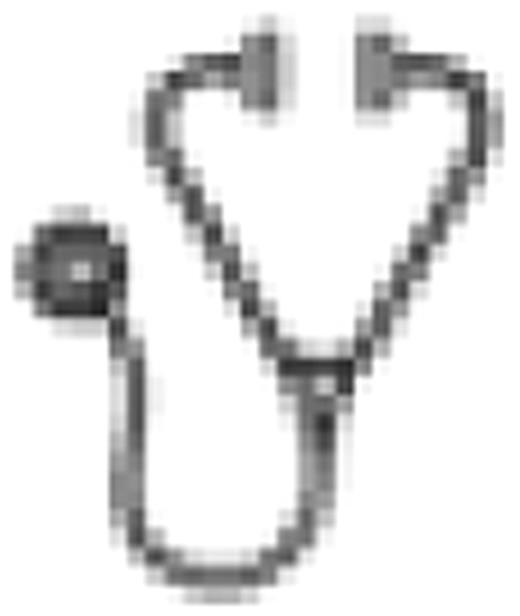Abstract
Abstract 2282
The Phase 3 DASISION trial comparing dasatinib 100 mg once daily with imatinib 400 mg once daily as initial treatment in patients (pts) with newly diagnosed CML-CP has demonstrated superior efficacy and favorable safety of dasatinib after a minimum of 12 months of follow-up (Kantarjian, H, et al. N Engl J Med 2010;362:2260). While fluid retention was more frequent with imatinib than with dasatinib, pleural effusion was seen only with dasatinib. Here, we provide a detailed analysis of pts experiencing pleural effusion, a clinically relevant adverse drug reaction.
519 pts with newly diagnosed, treatment-naive CML-CP (median disease duration of 1 month) were randomly assigned to either dasatinib 100 mg once daily (259 pts) or imatinib 400 mg one daily (260 pts). Key endpoints included complete cytogenetic response (CCyR), major molecular response (MMR) and safety. All pts were assessed by chest x-ray at baseline and at 6 months after randomization, or more frequently, if indicated clinically. Pts with pleural effusion at baseline were excluded. Pleural effusion was graded according to CTCAE version 3 (grade 1, asymptomatic; grade 2, symptomatic, up to 2 therapeutic thoracenteses; grade 3, symptomatic requiring supplemental oxygen, < 2 therapeutic thoracenteses; grade 4, life-threatening, hemodynamic instability).
After a minimum follow-up of 12 months with median treatment duration of 14.3 months (range, 0.3–25.8), 26 (10%, median age, 60 years) of the 258 dasatinib-treated pts (median age, 46 years) experienced pleural effusion. Of the pts with pleural effusion, 6 (23%) had low, 17 (65%) had intermediate and 3 (12%) had high Hasford risk scores. There were no grade 3 or 4 pleural effusion events. All events were grade 1(2%) or grade 2 (8%). Most events (n = 22, 85%) occurred more than 8 weeks after the start of study drug. In pts who had a pleural effusion, the median time to the event was 28 weeks (range, 4–88). Lymphocytosis (defined as peripheral blood lymphocyte count > 3.6 × 109/L) was noted in 11 (42%) of the 26 pts with pleural effusion, as compared to 46 (20%) of 232 pts with no pleural effusion. Pleural effusion was managed by dose modification and/or medical intervention. Therapy was interrupted in 19 pts, and the dose of dasatinib was reduced in 8 pts (4 pts, to 80 mg; 1 pt, to 70 mg; 3 pts, to 50 mg). Twelve pts received diuretics, 7 received corticosteroids, and only 1 pt underwent therapeutic thoracentesis. Only 3 pts (1.2%) discontinued therapy due to pleural effusion (grade 2). Eleven pts who continued dasatinib had resolution of their pleural effusion. Five pts had recurrent effusions. Of the 26 pts with pleural effusion, 24 (92%) achieved a CCyR and 17 (65%) achieved a MMR by 12 months of treatment; the corresponding CCyR and MMR rates in the total pt population were 83% and 46%, respectively Seven of the 8 pts with pleural effusion who reduced their dose achieved CCyR and MMR.
In pts with newly diagnosed CML-CP treated with dasatinib as initial therapy, pleural effusion was mild to moderate in severity, and was manageable with dose interruption and/reduction and/or a short course of diuretics and/or corticosteroids. The occurrence of pleural effusion and management interventions did not negatively affect the achievement of CCyR or MMR. These findings are in line with data reported previously for second-line dasatinib in CML pts resistant or intolerant to imatinib (Porkka, K, et al. Cancer 2010;116:377). Furthermore, pleural effusion and peripheral lymphocytosis may be indicative of immune-mediated antitumor activity of dasatinib.
Porkka: BMS, Novartis: Consultancy, Honoraria, Research Funding. Baccarani: Novartis, Bristol-Myers Squibb: Consultancy, Membership on an entity's Board of Directors or advisory committees. Hochhaus: Brostol-Myers Squibb, Novartis: Consultancy, Research Funding. Kantarjian: BMS, Pfizer and Novartis: Research Funding; Novartis: Consultancy. Mustjoki: BMS, Novartis: Honoraria. Bradley-Garelik: Bristol-Myers Squibb: Employment, Equity Ownership. Zhu: Bristol-Myers Squibb: Employment. Cortes: Brostol-Myers Squibb, Novartis and Wyeth: Consultancy, Honoraria.

This icon denotes an abstract that is clinically relevant.
Author notes
Asterisk with author names denotes non-ASH members.

